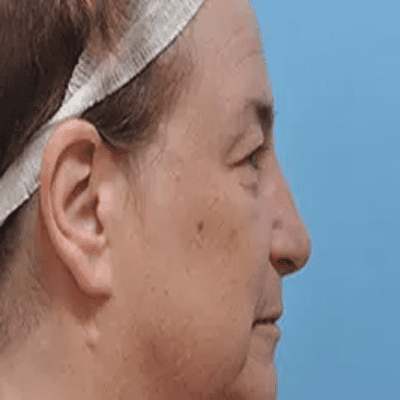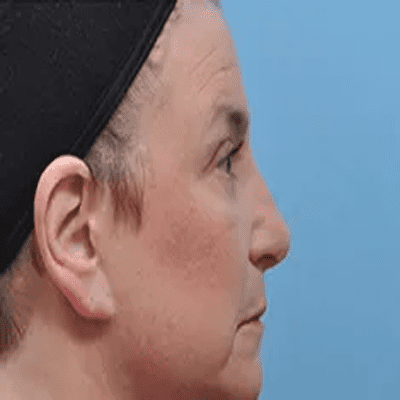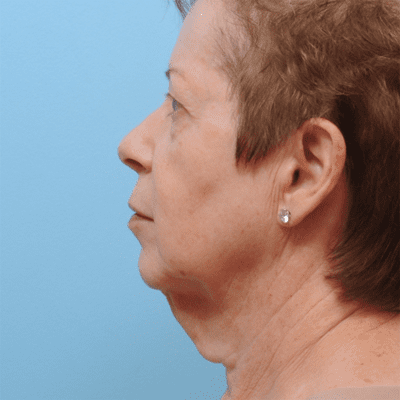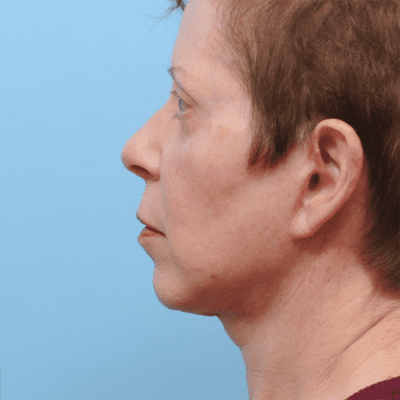Facelift Surgery in New Jersey – Look Years Younger
- Services
- Facial Procedures
- Facelift
Information
Facelift
No one can completely stop the natural aging process. Still, the talented facial rejuvenation surgeons at the Plastic Surgery Group can help turn back the hands of time with facelift surgery. By undergoing a surgical lifestyle lift in New Jersey, patients can improve visible signs of aging throughout the face so they look years younger than their actual age.
FAQ
Facelift Q & A
As time passes, factors such as hereditary traits, constant sun exposure, the Earth’s gravitational pull and certain lifestyle habits such as smoking can negatively impact the health and texture of your skin, leading to noticeable signs of premature aging on the face.
In addition, as we age, the body slowly stops producing collagen and elastin, two proteins that are crucial for maintaining healthy, elastic skin. When this happens, the skin loses its elastic quality and starts to sag; fat becomes displaced; and muscle tone degenerates. These developments also lead to visible signs of facial aging, including wrinkles, creases, folds, furrows, hollow-looking areas, sagging skin and jowls, among other aesthetic concerns.
For individuals who feel young at heart but are bothered by these apparent signs of aging, it might be time to pursue facelift surgery.
A facelift is a suspensory surgery designed to raise the soft tissues of the face. The overall objectives of a lift are to tighten loose skin, redistribute fat that has migrated to undesirable areas of the face, and restore muscle tone.
Lifestyle lift surgery can be combined with other facial rejuvenation procedures, including neck lift, brow lift or eyelid surgery, to optimize the aesthetic outcome of surgery. Others may consider more significant measures such as a chin implant or rhinoplasty.
Facelift surgery is always performed under general anesthesia, and is typically performed on an outpatient basis.
The incision pattern for facelift surgery varies by patient, depending on the complexity of the person’s facial rejuvenation and anatomical needs. During consultation, the surgeon evaluates patients’ facial structures and surgical objectives before recommending an appropriate treatment protocol, including an incision pattern.
With the traditional approach to facelift surgery, the plastic surgeon makes an incision starting at the temple and extending around the ear, terminating either behind the ear or in the scalp area. Once the surgeon has made the incision, he or she carefully raises a skin flap and restores the underlying muscles and tissues, distributing any displaced fat, as necessary. The surgeon re-drapes the residual skin and excises any lax, hanging skin before closing the incisions, with the technique that best conceals the incisions.
Again, depending on the individual’s skin health, including the degree of skin laxity present, unique bone structure and other factors, the surgeon recommends an appropriate treatment protocol that may involve an alternative facelift approach. The following are the different approaches offered at the Plastic Surgery Group’s Montclair, NJ location:
- SMAS lift. With this approach, the surgeon repositions skin and other tissues, eliminating excess skin as needed, and tightens the supporting connective tissue layer called the superficial musculoaponeurotic system, or SMAS. This allows the skin over the cheeks, jaw line and neck area to be more easily re-draped, for smoother contours without apparent tension.
- Subperiosteal lift. This facelift approach, which is sometimes performed endoscopically, involves releasing tissues off the bony layer of the facial structure to provide a vertical lift of the soft facial tissues. At the Plastic Surgery Group, we do not usually recommend this approach, as it is more beneficial to reshape and elevate the underlying structures as well as the overlying tissues, for a more natural-looking, lasting outcome.
- Deep plane facelift. The deep plane approach is designed to lift the skin, fat, muscles and other facial tissues in one continuous section in order to reshape the entire face. However, most patients can achieve their desired facial rejuvenation goals with a less invasive method.
Patients recovering from facelift generally need to take about one to two weeks off from work or their normal schedule. Although many of the symptoms will subside within the first week, it takes about two weeks for any visible signs of surgery to become less noticeable.
During the first few days after surgery, patients should keep their head elevated, even while resting. Individuals may experience mild discomfort throughout the treatment area. Taking oral pain relievers as directed will help alleviate any discomfort. The treatment area may be swollen or bruised, but these expected symptoms should, again, subside within about seven days. Any stitches that do not dissolve on their own will be removed during one of the patient’s follow-up appointments, within about 10 days of surgery.
Depending on lifestyle habits such as smoking and sun exposure, genetic factors and previous facial surgical history, the aesthetic effects of facelift should last about five to 10 years.
BOOK NOW
Make An Appointment
To schedule a private consultation with one of our board-certified plastic surgeons to learn more about your facelift surgery treatment options, please contact the Plastic Surgery Group by calling (973) 233-1933 for our Montclair, NJ location.







